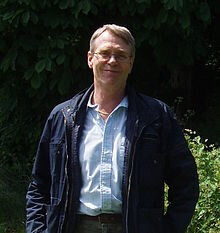|
ROGER GRIFFIN, Professor in Modern History at Oxford Brookes University |
|
After 26 years of research and 10,000 pages of notes, my findings on the First World War crystallize as follows: It was a collective ritual whose purpose was to sacralize the nation-state. By consuming soldiers’ bodies, the body politic came into being: “Individuals died so the nation might live.”
In the excerpt below, Roger Griffin writes of the “sacrificial fantasy” that sustained the First World War. The deaths of soldiers served to “revitalize the community.” The sacrificed blood of the soldier, Barak Rahimi says, bestows “new life for the community.” The reality of the nation is displayed with the “destruction of each body on the battlefield.”
Political history embodies a profound, massive form of psychopathology. Yet we live within the matrix of this psychopathology, equating it with “normality.”
I’ve written about “awakening from the nightmare of history.” But before one can awaken, one has to face the reality of the nightmare in which we are immersed. We haven’t done this yet.
From “The Meaning of ‘Sacrifice’ in the First World War” (R. Griffin):”
American social psychologist Richard Koenigsberg in a series of essays has explored the “sacrificial fantasy” that the death of the soldier is vital to the revitalization of the community, or more precisely the “body politic.” This is a literalized, reified metaphor configured as a suprapersonal, “magic” organism of flesh, blood, and spirit, whether in the form of the tribe, a distinctive ethnic culture, or in a modern context, the nation.
He argues that the all-consuming sacralization of death in the First World War points to the survival into modern times of the same primordial logic that drove the elaborate social and ritual life of the Aztecs, which was entirely constructed round the myth that war was a sacred necessity.
The logic was simple: If no enemy warriors were captured in combat to immolate atop the pyramid-altar, no sacrificial blood could run down the steps to keep the sun alive. As Barak Rahimi puts it, the sacrificed blood of a soldier “bestows a new life for the community, as it identifies the reality of the nation displayed with the destruction of each body on the battle field.” |
|
